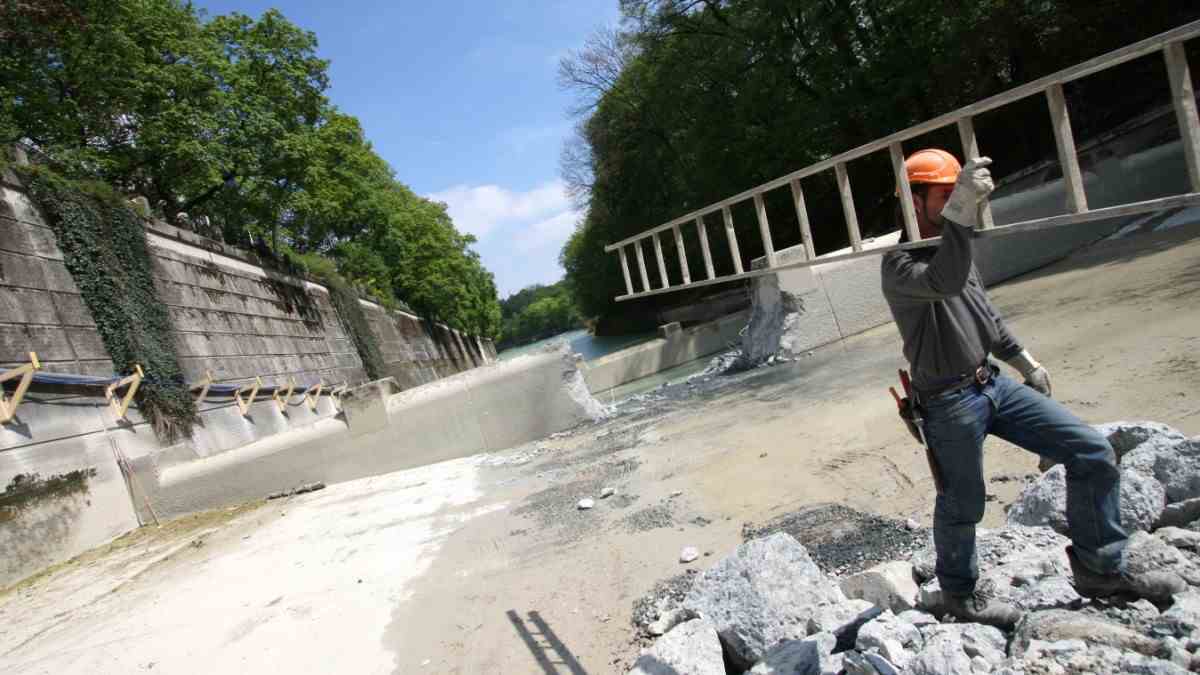Stadtwerke München (SWM) want to become the sole owner of the hydroelectric power plant on the Praterinsel. They currently own 70 percent of the shares. The rest is held by the insolvent company Green City AG. The two partners built the power plant on the Isar together and put it into operation in the summer of 2010. “We are in talks and hope that we can come to an agreement,” said SWM Managing Director Florian Bieberbach.
He assumes that a result could be available soon. The contact person is Green City’s insolvency administrator, who has an interest in completing the process quickly. The Munich subsidiary has already obtained permission for the purchase from the city council. In a non-public meeting on Tuesday, the economic committee voted with a large majority to acquire the remaining 30 percent of the power plant. That would be “the best option to ensure that this power plant, which is located in the center of the city, remains completely in Munich’s hands,” says the draft resolution.
The city council approved the purchase with the proviso that the price stays in the single-digit million range. The operating company should still have to pay off a good seven million euros in credits and loans. That would have to be offset against the purchase, they say. The municipal utilities can also examine whether they should demand the assignment or collection of the Green City shares instead of a purchase. According to the articles of association of the joint company, this is possible with a corresponding settlement in the event of the insolvency of a partner.
4000 Munich households can be supplied by the system under the Maximiliansbrücke
The power plant below the Maximiliansbrücke cannot be seen. Here, water for the so-called Fabrikbach and subsequently the Eisbach in the English Garden is diverted via the Prater weir on the arm of the Great Isar. In addition, part of it falls from a height of nine meters onto a turbine underground. At the end of the cascades, the power plant water flows back into the Great Isar. The output amounts to about 2.5 megawatts. This is enough to supply around 4,000 Munich households.
The Prater power plant is therefore one of the smaller Munich municipal utility plants on the Isar. The larger quantities are supplied by the power plants on the factory canal. It branches off on the Isar below Baierbrunn and feeds Isarwerk 1 about 1.8 kilometers below the Großhesseloher weir. It was built in 1905 and has been in operation since 1907. In the years from 1920 to 1923, the Isarwerk 2 was built at the level of the Flaucher and the Isarwerk 3 below the Braunau railway bridge. Together they supply green electricity for around 19,000 households.
The Maxwerk is the oldest hydroelectric power station operated by the Stadtwerke in Munich. As early as 1895 it was built on the Auer Mühlbach just before the confluence with the Isar. The building, constructed in the style of a baroque pleasure palace, caused a heated political dispute a few years ago. The public utilities and also many city politicians wanted to use it gastronomically, but the plans failed due to resistance from Isar friends and nature conservationists who wanted to prevent further commercialization of the Isar facilities. The power plant supplies almost half of the electricity from the Praterwerk.
The Stadtwerke also operate other hydroelectric power plants in the region. The Leitzachwerke, for example, use the water from Mangfall, Leitzach and Schlierach to generate electricity. However, the run-of-river at weirs is not used here, they function as pumped-storage power plants. Seehamer See serves as the upper reservoir, located on the Autobahn from Munich to Salzburg just before Irschenberg. There are also facilities on the Sempt, in Fischbachau and in Munich at the Floriansmühle. Incidentally, the Oberföhringer weir does not belong to the public utility company, but to the energy supplier Uniper.

